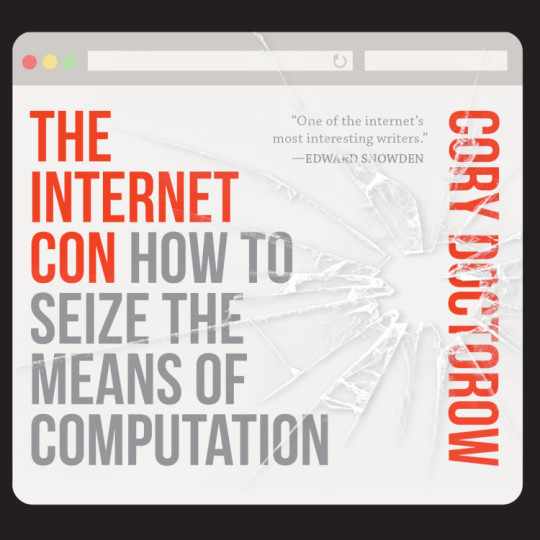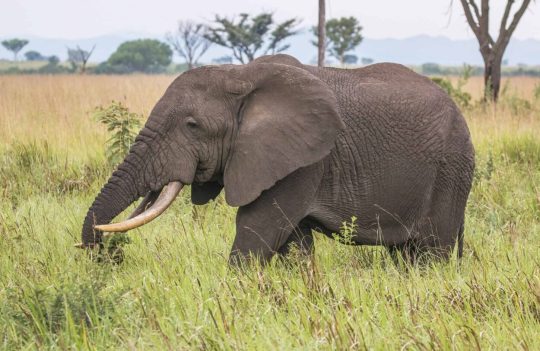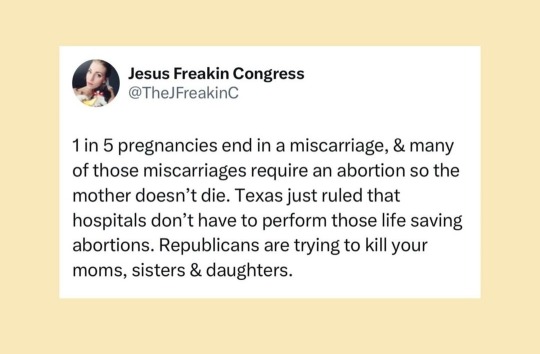#healthcare panels
Explore tagged Tumblr posts
Text

Healthcare Research Panels in Delhi
Snware's in-house healthcare panel comprises experts from over 50 featured specialisations and subspecialties. Among our verified and profiled members are technicians, dieticians, pharmacists, lab managers, purchase managers, nurses, and social workers. Searching for medical professionals in the C-suite? Our robust panels of healthcare experts include C-suite executives from payer/MCO organisations, pharmaceutical companies, hospitals, and medical device companies. They also include senior executives, medical directors, and C-level professionals. With years of nurturing and developing inroads into various platforms, our Healthcare Panel has established a reputation as a top-notch panel of healthcare professionals that provides healthcare benefits and charitable contributions through a variety of community programmes. Our ability to connect and reach difficult-to-reach target audiences stems from our in-depth profiling of experts and illnesses.
For more info visit https://snwareresearch.com/healthcare-panels/
0 notes
Text
Healthcare Market Research Panel
Unlock the Healthcare Market Research Panel — Connect with 1.2 million patients, over 700,000 physicians, and healthcare professionals worldwide. Our 5-step authentication process guarantees genuine and high-quality responses.
0 notes
Text
America's largest hospital chain has an algorithmic death panel

It’s not that conservatives aren’t sometimes right — it’s that even when they’re right, they’re highly selective about it. Take the hoary chestnut that “incentives matter,” trotted out to deny humane benefits to poor people on the grounds that “free money” makes people “workshy.”
There’s a whole body of conservative economic orthodoxy, Public Choice Theory, that concerns itself with the motives of callow, easily corrupted regulators, legislators and civil servants, and how they might be tempted to distort markets.
But the same people who obsess over our fallible public institutions are convinced that private institutions will never yield to temptation, because the fear of competition keeps temptation at bay. It’s this belief that leads the right to embrace monopolies as “efficient”: “A company’s dominance is evidence of its quality. Customers flock to it, and competitors fail to lure them away, therefore monopolies are the public’s best friend.”
But this only makes sense if you don’t understand how monopolies can prevent competitors. Think of Uber, lighting $31b of its investors’ cash on fire, losing 41 cents on every dollar it brought in, in a bid to drive out competitors and make public transit seem like a bad investment.
Or think of Big Tech, locking up whole swathes of your life inside their silos, so that changing mobile OSes means abandoning your iMessage contacts; or changing social media platforms means abandoning your friends, or blocking Google surveillance means losing your email address, or breaking up with Amazon means losing all your ebooks and audiobooks:
https://www.eff.org/deeplinks/2021/08/facebooks-secret-war-switching-costs
Businesspeople understand the risks of competition, which is why they seek to extinguish it. The harder it is for your customers to leave — because of a lack of competitors or because of lock-in — the worse you can treat them without risking their departure. This is the core of enshittification: a company that is neither disciplined by competition nor regulation can abuse its customers and suppliers over long timescales without losing either:
https://pluralistic.net/2023/01/21/potemkin-ai/#hey-guys
It’s not that public institutions can’t betray they public interest. It’s just that public institutions can be made democratically accountable, rather than financially accountable. When a company betrays you, you can only punish it by “voting with your wallet.” In that system, the people with the fattest wallets get the most votes.
When public institutions fail you, you can vote with your ballot. Admittedly, that doesn’t always work, but one of the major predictors of whether it will work is how big and concentrated the private sector is. Regulatory capture isn’t automatic: it’s what you get when companies are bigger than governments.
If you want small governments, in other words, you need small companies. Even if you think the only role for the state is in enforcing contracts, the state needs to be more powerful than the companies issuing those contracts. The bigger the companies are, the bigger the government has to be:
https://doctorow.medium.com/regulatory-capture-59b2013e2526
Companies can suborn the government to help them abuse the public, but whether public institutions can resist them is more a matter of how powerful those companies are than how fallible a public servant is. Our plutocratic, monopolized, unequal society is the worst of both worlds. Because companies are so big, they abuse us with impunity — and they are able to suborn the state to help them do it:
https://www.cambridge.org/core/journals/perspectives-on-politics/article/testing-theories-of-american-politics-elites-interest-groups-and-average-citizens/62327F513959D0A304D4893B382B992B
This is the dimension that’s so often missing from the discussion of why Americans pay more for healthcare to get worse outcomes from health-care workers who labor under worse conditions than their cousins abroad. Yes, the government can abet this, as when it lets privatizers into the Medicare system to loot it and maim its patients:
https://prospect.org/health/2023-08-01-patient-zero-tom-scully/
But the answer to this isn’t more privatization. Remember Sarah Palin’s scare-stories about how government health care would have “death panels” where unaccountable officials decided whether your life was worth saving?
https://pubmed.ncbi.nlm.nih.gov/26195604/
The reason “death panels” resounded so thoroughly — and stuck around through the years — is that we all understand, at some deep level, that health care will always be rationed. When you show up at the Emergency Room, they have to triage you. Even if you’re in unbearable agony, you might have to wait, and wait, and wait, because other people (even people who arrive after you do) have it worse.
In America, health care is mostly rationed based on your ability to pay. Emergency room triage is one of the only truly meritocratic institutions in the American health system, where your treatment is based on urgency, not cash. Of course, you can buy your way out of that too, with concierge doctors. And the ER system itself has been infested with Private Equity parasites:
https://pluralistic.net/2022/11/17/the-doctor-will-fleece-you-now/#pe-in-full-effect
Wealth-based health-care rationing is bad enough, but when it’s combined with the public purse, a bad system becomes a nightmare. Take hospice care: private equity funds have rolled up huge numbers of hospices across the USA and turned them into rigged — and lethal — games:
https://pluralistic.net/2023/04/26/death-panels/#what-the-heck-is-going-on-with-CMS
Medicare will pay a hospice $203-$1,462 to care for a dying person, amounting to $22.4b/year in public funds transfered to the private sector. Incentives matter: the less a hospice does for their patients, the more profits they reap. And the private hospice system is administered with the lightest of touches: at the $203/day level, a private hospice has no mandatory duties to their patients.
You can set up a California hospice for the price of a $3,000 filing fee (which is mostly optional, since it’s never checked). You will have a facility inspection, but don’t worry, there’s no followup to make sure you remediate any failing elements. And no one at the Centers for Medicare & Medicaid Services tracks complaints.
So PE-owned hospices pressure largely healthy people to go into “hospice care” — from home. Then they do nothing for them, including continuing whatever medical care they were depending on. After the patient generates $32,000 in billings for the PE company, they hit the cap and are “live discharged” and must go through a bureaucratic nightmare to re-establish their Medicare eligibility, because once you go into hospice, Medicare assumes you are dying and halts your care.
PE-owned hospices bribe doctors to refer patients to them. Sometimes, these sham hospices deliberately induce overdoses in their patients in a bid to make it look like they’re actually in the business of caring for the dying. Incentives matter:
https://www.newyorker.com/magazine/2022/12/05/how-hospice-became-a-for-profit-hustle
Now, hospice care — and its relative, palliative care — is a crucial part of any humane medical system. In his essential book, Being Mortal, Atul Gawande describes how end-of-life care that centers a dying person’s priorities can make death a dignified and even satisfying process for the patient and their loved ones:
https://atulgawande.com/book/being-mortal/
But that dignity comes from a patient-centered approach, not a profit-centered one. Doctors are required to put their patients’ interests first, and while they sometimes fail at this (everyone is fallible), the professionalization of medicine, through which doctors were held to ethical standards ahead of monetary considerations, proved remarkable durable.
Partly that was because doctors generally worked for themselves — or for other doctors. In most states, it is illegal for medical practices to be owned by non-MDs, and historically, only a small fraction of doctors worked for hospitals, subject to administration by businesspeople rather than medical professionals.
But that was radically altered by the entry of private equity into the medical system, with the attending waves of consolidation that saw local hospitals merged into massive national chains, and private practices scooped up and turned into profit-maximizers, not health-maximizers:
https://prospect.org/health/2023-08-02-qa-corporate-medicine-destroys-doctors/
Today, doctors are being proletarianized, joining the ranks of nurses, physicians’ assistants and other health workers. In 2012, 60% of practices were doctor-owned and only 5.6% of docs worked for hospitals. Today, that’s up by 1,000%, with 52.1% of docs working for hospitals, mostly giant corporate chains:
https://prospect.org/health/2023-08-04-when-mds-go-union/
The paperclip-maximizing, grandparent-devouring transhuman colony organism that calls itself a Private Equity fund is endlessly inventive in finding ways to increase its profits by harming the rest of us. It’s not just hospices — it’s also palliative care.
Writing for NBC News, Gretchen Morgenson describes how HCA Healthcare — the nation’s largest hospital chain — outsourced its death panels to IBM Watson, whose algorithmic determinations override MDs’ judgment to send patients to palliative care, withdrawing their care and leaving them to die:
https://www.nbcnews.com/health/health-care/doctors-say-hca-hospitals-push-patients-hospice-care-rcna81599
Incentives matter. When HCA hospitals send patients to die somewhere else to die, it jukes their stats, reducing the average length of stay for patients, a key metric used by HCA that has the twin benefits of making the hospital seem like a place where people get well quickly, while freeing up beds for more profitable patients.
Goodhart’s Law holds that “When a measure becomes a target, it ceases to be a good measure.” Give an MBA within HCA a metric (“get patients out of bed quicker”) and they will find a way to hit that metric (“send patients off to die somewhere else, even if their doctors think they could recover”):
https://en.wikipedia.org/wiki/Goodhart%27s_law
Incentives matter! Any corporate measure immediately becomes a target. Tell Warners to decrease costs, and they will turn around and declare the writers’ strike to be a $100m “cost savings,” despite the fact that this “savings” comes from ceasing production on the shows that will bring in all of next year’s revenue:
https://deadline.com/2023/08/warner-bros-discovery-david-zaslav-gunnar-wiedenfels-strikes-1235453950/
Incentivize a company to eat its seed-corn and it will chow down.
Only one of HCA’s doctors was willing to go on record about its death panels: Ghasan Tabel of Riverside Community Hospital (motto: “Above all else, we are committed to the care and improvement of human life”). Tabel sued Riverside after the hospital retaliated against him when he refused to follow the algorithm’s orders to send his patients for palliative care.
Tabel is the only doc on record willing to discuss this, but 26 other doctors talked to Morgenson on background about the practice, asking for anonymity out of fear of retaliation from the nation’s largest hospital chain, a “Wall Street darling” with $5.6b in earnings in 2022.
HCA already has a reputation as a slaughterhouse that puts profits before patients, with “severe understaffing”:
https://www.nbcnews.com/health/health-news/workers-us-hospital-giant-hca-say-puts-profits-patient-care-rcna64122
and rotting, undermaintained facililties:
https://www.nbcnews.com/health/health-care/roaches-operating-room-hca-hospital-florida-rcna69563
But while cutting staff and leaving hospitals to crumble are inarguable malpractice, the palliative care scam is harder to pin down. By using “AI” to decide when patients are beyond help, HCA can employ empiricism-washing, declaring the matter to be the factual — and unquestionable — conclusion of a mathematical process, not mere profit-seeking:
https://pluralistic.net/2023/07/26/dictators-dilemma/ggarbage-in-garbage-out-garbage-back-in
But this empirical facewash evaporates when confronted with whistleblower accounts of hospital administrators who have no medical credentials berating doctors for a “missed hospice opportunity” when a physician opts to keep a patient under their care despite the algorithm’s determination.
This is the true “AI Safety” risk. It’s not that a chatbot will become sentient and take over the world — it’s that the original artificial lifeform, the limited liability company, will use “AI” to accelerate its murderous shell-game until we can’t spot the trick:
https://pluralistic.net/2023/06/10/in-the-dumps-2/
The risk is real. A 2020 study in the Journal of Healthcare Management concluded that the cash incentives for shipping patients to palliatve care “may induce deceiving changes in mortality reporting in several high-volume hospital diagnoses”:
https://journals.lww.com/jhmonline/Fulltext/2020/04000/The_Association_of_Increasing_Hospice_Use_With.7.aspx
Incentives matter. In a private market, it’s always more profitable to deny care than to provide it, and any metric we bolt onto that system to prevent cheating will immediately become a target. For-profit healthcare is an oxymoron, a prelude to death panels that will kill you for a nickel.
Morgenson is an incisive commentator on for-profit looting. Her recent book These Are the Plunderers: How Private Equity Runs — and Wrecks — America (co-written with Joshua Rosner) is a must-read:
https://pluralistic.net/2023/06/02/plunderers/#farben

I’m kickstarting the audiobook for “The Internet Con: How To Seize the Means of Computation,” a Big Tech disassembly manual to disenshittify the web and bring back the old, good internet. It’s a DRM-free book, which means Audible won’t carry it, so this crowdfunder is essential. Back now to get the audio, Verso hardcover and ebook:
http://seizethemeansofcomputation.org

If you'd like an essay-formatted version of this thread to read or share, here's a link to it on pluralistic.net, my surveillance-free, ad-free, tracker-free blog:
https://pluralistic.net/2023/08/05/any-metric-becomes-a-target/#hca

[Image ID: An industrial meat-grinder. A sick man, propped up with pillows, is being carried up its conveyor towards its hopper. Ground meat comes out of the other end. It bears the logo of HCA healthcare. A pool of blood spreads out below it.]

Image: Seydelmann (modified) https://commons.wikimedia.org/wiki/File:GW300_1.jpg
CC BY 3.0 https://creativecommons.org/licenses/by-sa/3.0/deed.en
#pluralistic#hca healthcare#Gretchen Morgenson incentives matter#death panels#medicare for all#ibm watson#the algorithm#algorithmic harms#palliative care#hospice#hospice care#business#incentives matter#any metric becomes a target#goodhart's law
542 notes
·
View notes
Link
“A Nigerian mom found out the hard way that jaundice is still a dangerous disease in Africa—but now she’s putting an end to the infant disease with her new tech startup, making solar-powered cribs.
After her traumatic experience with jaundice as a new mother, Virtue Oboro pivoted 180° in her professional life, in an effort to help prevent the terrifying situation from befalling other moms.
Oboro’s son, Tombra, was just 48 hours old when he had to be rushed to the NICU, suffering from a build-up of bilirubin, which causes yellow skin and can lead to permanent damage or even death.
The treatment is fairly simple... blue-light phototherapy.
Virtue’s hospital had no phototherapy devices, so Tombra had to receive a risky emergency blood transfusion. Her son would make a full recovery, but Virtue was changed by the experience.
“I felt like some of the things I experienced could have been avoided,” the visual designer told CNN. “I thought, is there something I could do to make the pain less for the babies and the mothers?”
What could a visual designer do? She designed the Crib A’Glow and named her new company Tiny Hearts.
The portable, deployable phototherapy unit is powered by the sun, and costs one-sixth the price of a normal phototherapy crib—and is manufactured in her homeland of Nigeria.
Virtue’s husband had some experience working with solar panels before, so he lent a hand to the visual designer, who was busy navigating the unknown waters of a new profession. She worked with a pediatrician through the design process to ensure all the details would benefit the tiny babies.
Two years ago, Crib A’Glow picked up a $50,000 grant from Johnson & Johnson through the Africa Innovation Challenge, and the Crib A’Glow can now be found in 500 hospitals across Nigeria and neighboring Ghana. Already it has been used on 300,000 babies.
Virtue, who has also become a 2022 awardee for The Africa Prize for Engineering Innovation, says a further 200,000 babies were saved from jaundice by deploying the cribs to rural areas—no hospitals or electricity needed.” -via Good News Network, 3/9/22
#nigeria#nicu#jaundice#babies#child mortality#ghana#solar panels#phototherapy#medical news#healthcare#healthcare access#infant mortality#cw infant death
912 notes
·
View notes
Text
We don't know the motive yet, but it's real rich seeing liberals decry the "violence" against the UHC CEO, but don't consider the company's choices that directly lead to thousands of deaths through denied coverage as "violence".
I don't like "violence" either, but when you make it impossible for the capital class to be held accountable for their violence on society, you make violence against them inevitable. I'm just surprised it took so long for this to happen.
Something about our healthcare system needs to change or things are going to get a lot messier, and I unfortuantely don't think killing CEOs is going to make them change heart. Rather, they'd probably double down and sick the FBI on the "terrorists" doing the assassinations.
#united healthcare#socialism#late stage capitalism#I have UHC so i know how much it sucks#cons were so worried about gov run death panels#but these conpanies ARE literal death panels now!
26 notes
·
View notes
Note
Pffffft




I had way too much fun with this
bonus points if you can remember which of jojo’s panels these are! :D
HAHAHA THESE ARE FANTASTIC 🤣🤣🤣🤣
RIP Four
Also Wars you’re making me nervous 😂👀
THE MASTER SCALPEL LOL
I love this so much, thanks for sharing 😂😂❤️
#asks#lu in healthcare#lu wind#lu legend#lu warriors#lu time#lu malon#lu four#lu wild#lovely dogsnoptics#art#not mine#fisiwbwkfux this is fantastic#I recognize almost all the panels
56 notes
·
View notes
Text

#tear it all down#uhc#the death panels are us health insurance companies#healthcare#health insurance industry
5 notes
·
View notes
Text
Good News - March 15-21
Like these weekly compilations? Support me on Ko-fi! Also, if you tip me on here or Ko-fi, at the end of the month I’ll send you a link to all of the articles I found but didn’t use each week - almost double the content! (I’m new to taking tips on here; if it doesn’t show me your username or if you have DM’s turned off, please send me a screenshot of your payment)
1. Comeback on the cards for Asian antelope declared extinct in Bangladesh

“Nilgais, the largest antelope species in Asia, are reappearing in northwestern Bangladesh, a country that was part of their historical range but where they were declared locally extinct in the 1930s due to habitat loss and hunting.”
2. Tribal Homes in Minnesotta [sic] Get $1.4M for Clean Electricity
““This grant will allow us to make electrification improvements to our members’ homes and involve them more directly in our efforts to change our energy narrative and achieve our net zero goal.””
3. Pollinators Flock to Flower-Filled Solar Panel Fields

“As populations of crucial pollinators decline, developers have been seeding the grounds of their solar arrays with native wildflowers. Now a five-year study published in Environmental Research Letters confirms that this approach boosts the pollinators’ abundance and diversity—with spillover benefits for surrounding farms.”
4. U.S. House of Representatives Passes WILD Act

“The WILD Act supports funding two different initiatives: […] the U.S. Fish and Wildlife Service’s Partners for Fish and Wildlife Program offers critical support for voluntary conservation initiatives[, and…] The Multinational Species Conservation Funds play a pivotal role in supporting the conservation of imperiled species globally”
5. Private Gender Affirming Care Ban Fails To Advance In England After "Ferret Filibuster"

“A bill banning puberty blockers for trans youth and defining sex to exclude trans people was blocked from being heard after Labour MPs spoke at length on pet names and ferrets.”
6. Community-Led Effort to Plant Thousands of Seedlings
“Despite its urban surroundings, [the Tucki Tucki] creek serves as a vital refuge for the endangered platypus and purple spotted gudgeon populations. […] Planting native vegetation along the water’s edge serves multiple purposes. Not only does it provide crucial habitat for the endangered species, but it also helps stabilise the banks, mitigating erosion and reducing sedimentation in the creek.”
7. Court Ruling Halts Wolf Trapping and Snaring in Idaho Grizzly Bear Habitat

“[The ruling] will stop trapping and snaring […] to prevent the unlawful take of Endangered Species Act-protected grizzly bears. The decision stated, “There is ample evidence in the record, including from Idaho’s own witnesses, that lawfully set wolf traps and snares are reasonably likely to take grizzly bears in Idaho.””
8. A Boston grocery store is bringing community solar to a low-income area

“A group of energy-equity advocates in Boston is launching a community solar cooperative they say could be a scalable model for both reducing carbon emissions and building wealth in disadvantaged communities.”
9. Two-faced solar panels can generate more power at up to 70% less cost
“Scientists at the University of Surrey have built a new kind of solar panel with two faces, both of them pretty. Their flexible perovskite panels have electrodes made of tiny carbon nanotubes. These can generate more power with greater efficiency and at a cost 70% lower than existing solar panels.”
10. It's a boy! Athens zoo welcomes birth of rare pygmy hippo

“A rare and endangered pygmy hippopotamus has been born in Athens’ Attica Zoological Park for the first time in 10 years, delighting conservationists. A lack of male pygmy hippos in captivity had complicated breeding efforts, so zoo staff were “absolutely thrilled” the baby was a boy”
March 8-14 news here | (all credit for images and written material can be found at the source linked; I don’t claim credit for anything but curating.)
#good news#hopepunk#antelope#animals#extinction#conservation#solar#flowers#us politics#lgbtq#ferret#gender affirming care#native plants#wolf#grizzly bear#boston#poverty#solar power#solar energy#solar panels#zoo#hippo#pygmy hippo#baby animals#nature#wildlife#trans healthcare#deer#yellowstone
17 notes
·
View notes
Text
Ohhhhhh my goddddddddd so I’ve basically been to the doctor three times since turning 18 and aging out of the pediatrician because of my horrible doctor fears and issues. So it’s a MOMENTOUS occasion and the culmination of years of glacial self-work that I felt ready FINALLY READY to sit down and make a doctors appointment for a routine visit!! Like that is give or take a decade in the making…….and all the ethereal alchemical elements were correct so I could finally do it this morning. But the clinic is closed and you can only do it weekdays ☠️☠️☠️☠️☠️☠️ ok guess I am going to the doctor in 10 years probably. See you 2034
#the year when the water riots destroy Los Angeles finally#i want to go bc I need an inhaler and a blood panel ;-;#that’ll be $200 total probably!!!!!! agghdgdgdh#ok lucky for me my tax statement from 2023 was lowwwww bc I did most of my work under the table…#me who is low income when services for low income exist: but that’s 4 ppl who really need it!!!!! meanwhile I only eat dried beans#but basically I’ll probably make a bit more this year so I might try to get all the 10 years of accumulated cavities taken care of now#while it only costs 6 months’ paycheck and not 6 years!#I’ve got a really insane visible hole in my canine it’s soooo bad#:-/#the thing is that my mental health is so good rn I’m like wtf was I doinggggggg and I get so mad at myself. how quickly we forget the#horrors…#and also my hope is that since it’s a low income clinic they’ll be really kind to me when they tell me I have 18 cavities :-(#also me who has slipped through the cracks of the healthcare system due to mental health and gets flagged by social services meant to catch#people slipping through the cracks: but you guys should focus on the ppl who REALLY need it!!!!! I’m literally fine *dies of completely#preventable ailment that would’ve been flagged by routine bloodwork*
8 notes
·
View notes
Text

16 notes
·
View notes
Text

I call this one "posts that would do numbers on both chronic illness tumblr and vampire tumblr"
#me when I want a full blood panel done Just In Case but I don't trust the accuracy of at-home equipment and I don't want to be#bugging my doctor to run all the same tests yet again even though literally nothing has changed and we already know the results#☕️🥧#healthcare#chronic illness
2 notes
·
View notes
Text
Snware Research is your trusted partner for comprehensive market research solutions. We specialize in uncovering actionable insights that drive informed business decisions. With our expert team and cutting-edge methodologies, we provide customized research services tailored to your unique needs. Let's navigate the market landscape together and uncover opportunities for your business to thrive. Reach out to us today! Get more details at https://snwareresearch.com
#market research#research services#research#online panels#b2b panels#b2c panels#healthcare panels#healthcare services
0 notes
Text
This One Company Controls America’s Entire Health Care System
youtube
"We have the best government money can buy." Mark Twain
#Youtube#healthcare in america#health insurance#healthcare#medicare#medicare for all#insurance company#healthcare in the us#healthcare industry#death panel#bernie#bernie sanders
9 notes
·
View notes
Text
Today I had the incredible honor of speaking on a panel about trans healthcare at the Dartmouth medical school. I was able to speak on my experiences seeking care as a multiply disabled nonbinary person, offer insights into how these future doctors could be better advocates for their patients, and most importantly, meet Helen the watermelon cow.
#the panel was amazing obv but helen was truly such a delight#I had to drive past her a second time to make sure I got enough details that I would be able to find her on the internet#trans healthcare#education#medical system#transgender#disability
4 notes
·
View notes
Text





Texas has activist MAGA judges playing doctor. They are legislating from the bench.
#AbortionIsHealthCare
#texas#texas supreme death panel#texas is still a slave state#texas is a third world country#abortion is healthcare!#abortion saves lives#keep your laws off my body#pro roe#see you in roevember
977 notes
·
View notes
Text
This UHC Day, WHO calls for urgent action to put financial protection measures in place.

Universal Health Coverage Day 2024 focuses on the role of financial protection in accelerating progress towards UHC. Financial protection ensures that people don’t fall into poverty because of having to pay out-of-pocket for health costs. Over the last 20 years, financial protection has progressively deteriorated, with 2 billion people experiencing financial hardship and 1.3 billion people pushed into poverty due to health spending. This means that mothers may miss out on the life-saving intervention they need for themselves or their children, people are not diagnosed and treated for noncommunicable diseases (NCDs) on time, with delays in early treatment leading to severe, untreatable or life-threatening illnesses.
Healthier populations build communities that are more resilient, productive, peaceful and prosperous. Health for all is a pre-requisite to achieving the sustainable development goals (SDGs). In spite of numerous high-level political commitments to achieve UHC by 2030, over half of the world’s population still has no access to essential health services.
UHC will remain elusive until governments adequately invest in protecting people – particularly the most vulnerable among us – from impoverishing health spending.
#panel discussion#universal health coverage#sdg3#uhc2030#sustainable financing#healthcare financing#financial protection#data monitoring#disease outbreaks#12 december#health: its on the house government#investing in healthcare#health investments#investing in health#health inequality#integrated approach
0 notes